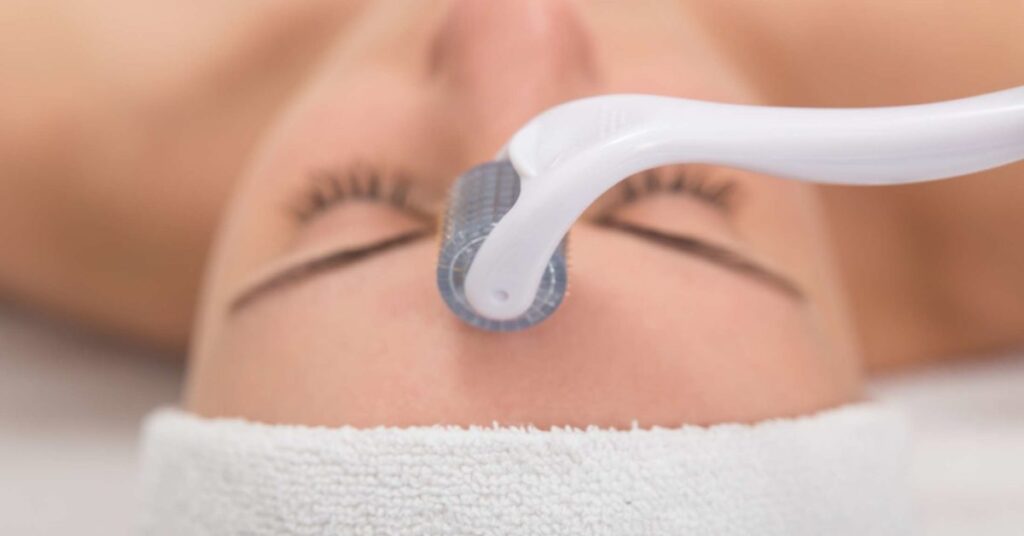Microneedling is one of the latest and greatest beauty antiaging facial treatments out there. It’s simple, affordable, and can achieve some pretty amazing results. But if you’re not careful, it can also leave your skin red, inflamed, and irritated. So, if you want to reduce redness after microneedling, follow these tips!
Why does redness appear after microneedling?
After microneedling, the skin looks red and inflamed. This is a normal reaction and happens because the microneedling punctures the skin. The redness usually goes away on its own. If the redness doesn’t go away or gets worse, it could be a sign of an infection. Permanent redness after microneedling can also be a sign of too much sun exposure. It’s essential to avoid sun exposure after microneedling and to wear sunscreen.
How long does redness last after microneedling?
Experts admit it is normal for the skin to appear red and flushed after a microneedling treatment. The redness is caused by the microscopic channels that are created in the skin during the treatment and typically lasts for 12-24 hours but can sometimes last up to 2-3 days. During this time, it is important to protect the skin from the sun and to avoid using any products that could irritate the skin. After the redness has faded, you should notice an improvement in the texture and tone of your skin.
How to reduce redness after micro needling?
As mentioned above, it can help to improve the appearance of fine lines, wrinkles, and scars. The treatment involves using a device to create tiny punctures in the skin, which triggers the body’s natural healing response. While the results can be very effective, some people may experience redness and swelling after the procedure.
Fortunately, there are a few things you can do to minimize redness and swelling after microneedling:
- Be sure to clean the treatment area thoroughly before and after the procedure. This will help to remove any bacteria or debris that could cause irritation.
- Apply a cold compress to the treatment area for a few minutes several times a day. This will help to reduce inflammation and soothe the skin.
- Avoid using harsh skincare products or exposing the treatment area to intense heat or cold for at least 24 hours after the procedure.
Following these simple tips can help reduce redness and swelling after microneedling and enjoy beautiful, healthy skin.
Can I have an allergy after the microneedling treatment?
Although microneedling is generally considered safe, there is a risk of developing an allergy to the treatment. The most common symptom of an allergy to microneedling is redness and swelling at the site of the punctures. If you experience these symptoms after a microneedling treatment, it is important to contact a healthcare professional right away.
Should I have an allergy test before microneedling?
If you are considering microneedling, you may wonder if you should have an allergy test before proceeding with the procedure. While there is no definitive answer, it is always a good idea to err on the side of caution and get tested. This is particularly important if you have never had an allergy test before or if you have any concerns about potential allergies. The allergy test itself is relatively simple and straightforward, and it can give you peace of mind knowing that you are not allergic to the products being used during the microneedling procedure. Ultimately, deciding whether to have an allergy test before microneedling is up to you, but it is something to consider if you want to be as safe as possible.
What to do if I get positively tested on allergy to microneedling?
If you have an allergy to microneedling, the best thing to do is to avoid it altogether. There are a number of other facial treatments that can be just as effective without the risk of an allergic reaction. However, if you have already had a reaction to microneedling, you can do a few things to help ease the symptoms. Antihistamines can help to reduce swelling and itchiness, and cold compresses can help to soothe the skin. It is also important to cleanse the skin thoroughly after treatment to remove any irritants that may have been left behind. If you have an allergy to microneedling, discuss your options with your doctor or dermatologist before undergoing further treatments.
Final thoughts
Redness is a common side effect of microneedling but can be minimized by following these simple tips. Apply a cold compress to the treatment area after your session and cleanse the skin thoroughly afterward to remove any irritants. If you experience any redness or irritation after your treatment, be sure to get tested for allergies to the components of the microneedling procedure before your next session. Taking these precautions can help ensure that your microneedling experience is as comfortable and effective as possible.

